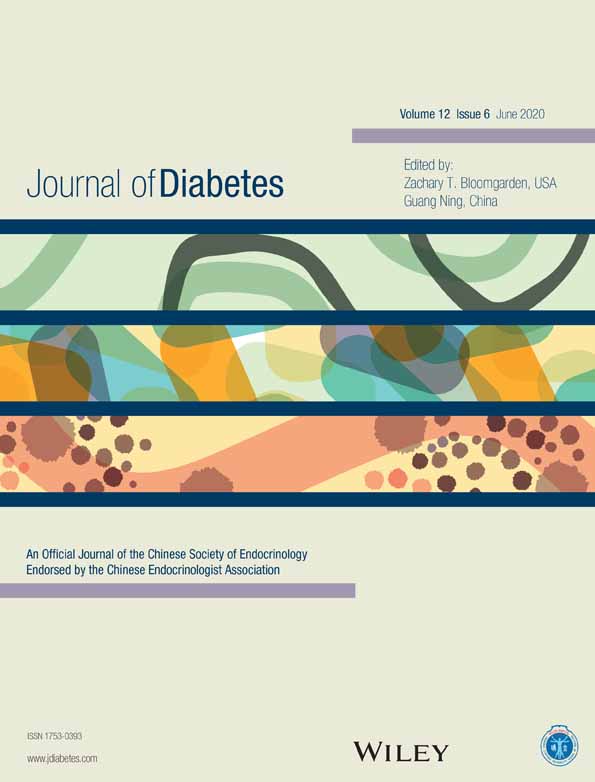Follicle-stimulating hormone and estradiol are associated with bone mineral density and risk of fractures in men with type 2 diabetes mellitus
卵泡刺激素和雌二醇与男性2型糖尿病患者的骨密度和骨折风险相关
Funding information: Chinese National Natural Science Foundation, Grant/Award Numbers: 81370018, 81570796; Shanghai Health and Family Planning Commission, Grant/Award Number: 201540166
Abstract
enBackground
Type 2 diabetes mellitus (T2DM) is associated with a higher fracture risk. Sex hormones are important for maintaining skeletal health. It is not clear which sex hormone(s) contribute(s) to bone mineral density (BMD) and fracture risk in males with T2DM. This study investigated the relationships of these parameters in males with T2DM.
Methods
This study involved 482 men with T2DM. BMDs at the lumbar spine (L2-4), femoral neck (FN), and total hip (TH) were measured by dual-energy X-ray absorptiometry (DXA). The 10-year probability of fractures was assessed using the modified Fracture Risk Algorithm (FRAX) tool. Serum levels of sex hormones were measured.
Results
Follicle-stimulating hormone (FSH) and estradiol (E2) were associated with BMDs at L2-4 (FSH, β = −.162, P < .05; E2, β = .176, P < .001), and E2 was associated with BMD at FN (β = .137, P < .05) and TH (β = .140, P < .05). FSH was associated with major osteoporotic fractures (β = .288, P < .001) and hip fractures (β = .235, P < .001). Higher FSH was a risk factor for osteoporosis/osteopenia (odds ratios [OR] = 2.92, 95% CI = 1.66-5.14, P < .001), whereas higher E2 was a protective factor (OR = 0.37, 95% CI = 0.22-0.60, P < .001). Patients in the higher tertile of FSH and lower tertile of E2 had an increased risk of osteoporosis/osteopenia (OR = 5.05, 95% CI = 1.37-18.65, P < .05).
Conclusions
For males with T2DM, FSH and E2 are significantly associated with BMD, osteoporosis/osteopenia, and fracture risk.
摘要
zh背景
2型糖尿病(T2DM)与较高的骨折风险相关。性激素对维持骨骼健康很重要。目前尚不清楚哪些性激素与男性T2DM患者的骨密度(BMD)和骨折风险有关。本研究探讨了男性T2DM患者在不同性激素水平与上述骨参数的关系。
方法
这项研究共纳入482名男性T2DM患者。采用双能x线骨密度仪(dual-energy
X-ray absorptiometry, DXA)测量腰椎(L2-4)、股骨颈(FN)和全髋关节(TH)的BMD。使用改进的骨折风险评估工具(Fracture Risk Algorithm, FRAX)评估未来10年的骨折风险, 同时测定血清性激素水平。
结果
卵泡刺激素(FSH)、雌二醇(E2)与L2-4的BMD(FSH, β=-0.162, P<0.05;E2, β=0.176, P<0.001)相关;E2与FN的BMD(β=0.137, P<0.05)和TH的BMD(β=0.140, P<0.05)相关。FSH与主要骨质疏松性骨折(MOF)风险(β=0.288, P<0.001)和髋部骨折风险(β=0.235, P<0.001)相关;FSH水平升高是导致骨质疏松/骨量减少的危险因素(OR=2.92, 95% CI=1.66-5.14, P<0.001), 而E2水平升高则是保护因素(OR=0.37, 95% CI=0.22-0.60, P<0.001)。FSH高三分位水平和E2低三分位水平的患者发生骨质疏松/骨量减少的风险增加(OR=5.05, 95% CI=1.37-18.65, P<0.05)。
结论
对于男性T2DM患者而言, FSH和E2与BMD、骨质疏松/骨量减少, 以及骨折风险存在显著相关性。




